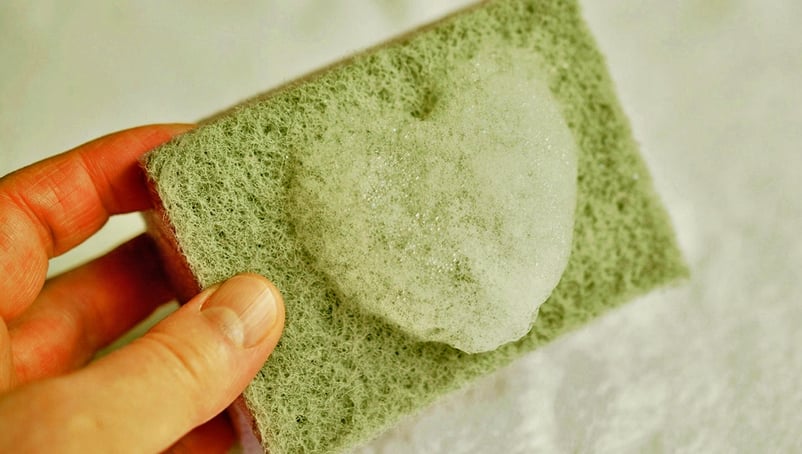 When you’ve completed the renovation of your Edmonton kitchen, you should be delighted with the way things look and feel. But how can you keep things looking great for years after the renovation is finished? That takes a little bit of loving care on your part. Here’s a look at 3 tips for caring for a newly renovated kitchen that will ensure that your Edmonton kitchen renovation continues to look great for years to come.
When you’ve completed the renovation of your Edmonton kitchen, you should be delighted with the way things look and feel. But how can you keep things looking great for years after the renovation is finished? That takes a little bit of loving care on your part. Here’s a look at 3 tips for caring for a newly renovated kitchen that will ensure that your Edmonton kitchen renovation continues to look great for years to come.
1. Countertops
Granite: Before installing your countertops, check with the manufacturer to see if (and how often) the surface needs to be sealed. Surfaces vary and some may already be sealed. Make sure you get information that’s applicable to your specific material. Clean your countertop regularly with warm water and a few drops of dish soap using a soft cloth. Rinse the surface thoroughly with clean water and dry with a soft cloth. Keeping the surface free of dirt and grime will help preserve granite. Wipe up spills immediately (especially spills such as red wine that can leave a stain).
Marble: If you have marble countertops, you can follow the same maintenance plan as for granite.
Quartz: Unlike granite, quartz countertops don’t require regular sealing maintenance. Simply wipe countertops with a soft cloth, soap, and water. You can use a mild household cleaner if you want, but avoid abrasive pads and powders that can damage the surface. Don’t use bleach, oven cleaners or abrasive pads or cleansers. It’s always a good idea to wipe up spills immediately to avoid stains.
Stainless: This surface requires nothing more than a regular wipe-down with mild soap and water. It’s still a good idea to avoid scratching the surface and to keep smudges and streaks under control. For that reason, use a microfiber towel and cleaner made especially for stainless steel to buff them out. Don’t use abrasive scrubbing pads or steel wool. Although the name implies one thing, stainless steel can stain to some degree. Take care of stains by polishing it occasionally with stainless-steel polish and a microfiber cloth—rubbing in the direction of the grain. Then buff it dry with a clean microfiber cloth.
Soapstone: Because this material is nonporous, it is resistant to staining and scratching. Maintenance involves cleaning it with virtually any non-abrasive multipurpose cleaner. While it resists stains, they can occur. So clean up spills immediately. Scratches and tough stains can be removed with very fine sandpaper (80 grit or lower). Apply mineral oil after sanding. Be aware that over time, mineral oil can darken the surface somewhat—an effect that many homeowners like.
Here’s a post that compares five of the most popular countertop materials for your Edmonton home.
2. Flooring
Hardwood: Use a soft cloth to blot spills and spots as soon as they happen. Sweep, dust or vacuum the floor regularly (and when vacuuming, use a hard floor attachment to avoid scratching or dulling your floor’s finish). Use a hardwood cleaner periodically to eliminate dirt and soil without damaging your floor’s finish. Don't use oil-based, wax, polish, or products containing ammonia as they can dull your floor’s finish. Don't use steel wool or abrasive cleaners. Don't wash or wet-mop the floor with soap, water, oil-soap detergent, or other liquid cleaning materials because doing so can cause swelling or warping—and could void your floor’s warranty. Don’t use buffing machines.
Laminate: Sweep, dust, or vacuum the floor regularly with the hard floor attachment to prevent accumulation of dirt and grit that can scratch or dull the floor finish. Occasionally clean the floor with cleaning products made specifically for laminate floors. Use a damp cloth to blot up spills as soon as they happen. If you have stains or spots from items such as oil, paint, markers, lipstick, or ink, you can use a clean white cloth and acetone/nail polish remover to remove the stain. Then wipe the area with a damp cloth. Don’t use steam cleaners, or wet mops and don’t use soap, water, oil-soap detergent or other liquid cleaning products.
Do not use steam cleaners or wet mops, which may cause irreparable damage to your floor. Do not wash or wet mop the floor with soap, water, oil-soap detergent or any other liquid cleaning products. Do not use buffing machines.
Stone/Tile: Sweep with a soft broom every day. If using a vacuum, make sure it has a hard floor setting. Mop stone tile floors weekly with a damp soft mop head or sponge and use a diluted general floor cleaner on harder stone floors (granite/slate), or a stone cleaner on softer stone (marble/ limestone). Use a soft scrub brush and your cleaner of choice on grout between tiles. Wipe cleaner off with a water-dampened sponge. Dry the area after cleaning. If you have colored grout, use a cleaning solution of one part water to one part white vinegar. Rinse all vinegar off with a water dampened sponge and dry the area. Dissolve oil stains, cooking grease, or milk spills with acetone. Dip a cotton ball in a small amount of acetone and lightly dab any oil-based stains. Immediately flush the area with water from a dampened sponge.
Which type of flooring is best for your Edmonton home? Here’s a post that compares popular flooring types.
3. Sinks
Stainless Steel: Wipe your sink dry after you use it because the metal surface can show dried water and mineral spots. Use a soft cloth or sponge and wipe in the same direction as the polish lines. You can use any cleaner, but avoid abrasives. Instead, try scrubbing with baking soda and then rinsing the sink with vinegar.
Concrete: Make sure your sink has been sealed because concrete is a porous material that can absorb water and stain easily. Don’t use citrus or vinegar to clean your sink. You’ll also want to avoid abrasive cleaners. Instead, use dishwashing soap and warm water with a soft towel or sponge. Using laundry detergent or laundry stain removers with a cloth can be effective as well.
Porcelain: You can use a variety of cleansers on a porcelain sink, but never use scrub brushes or steel wool. Mildly abrasive cleaners can be used sparingly to remove tough stains. Don’t use white vinegar or high-acid cleaners. Instead try a baking soda, ammonia and lemon mix for better results. Avoid putting hot pans in the sink. Also, be careful about leaving materials that can stain (red wine, coffee grounds, etc.) in the sink.






